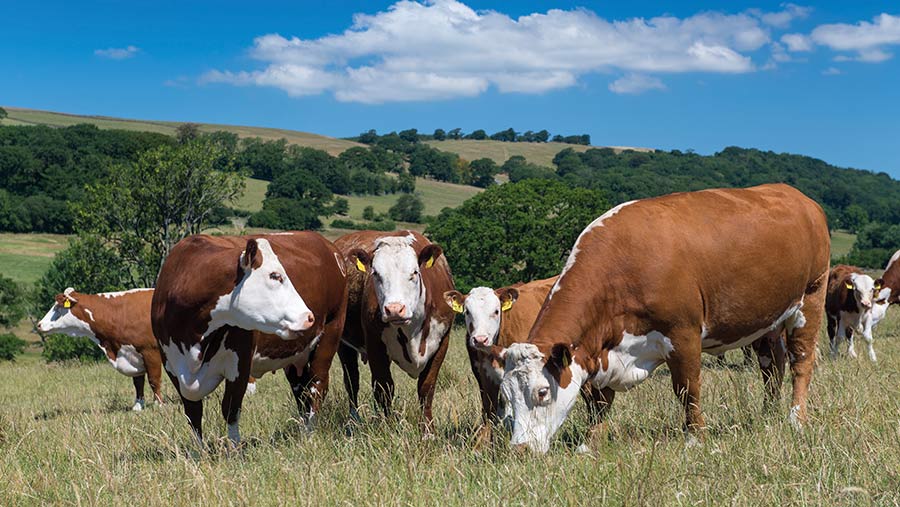Hot, dry weather puts pressure on UK livestock farmers
 © Wayne Hutchinson
© Wayne Hutchinson Livestock and dairy farmers in much of the country are becoming increasingly concerned about the ongoing spate of hot, dry weather, which is affecting both current and future production.
Rhys Lougher, who milks 120 cows near Bridgend in south Wales, says he has seen a 5 litre a cow a day drop in milk yield as the animals struggle in the heat.
“We are keeping them in during the day, with more water in the shed and misters to try and keep them comfortable, then letting them out at night to graze, but yields have still fallen,” he said.
See also: Huge fire rips through farmer’s field in North Yorkshire
“We also had a couple abort their calves in the last hot spell two weeks ago. They can cope with the odd hot day, but a prolonged spell takes its toll and we are worried about this weekend.”
But Mr Lougher, who bottles all the milk on farm, said the real worry is what it will mean for cow fertility.
“The eggs are developing in the ovaries now at a time of stress, which could really hit us in two months’ time. That is when production efficiency will really start to be affected.”
‘Desperately dry’
Forage availability is another concern – both immediately and looking towards the autumn and winter.
Clare Wise, a sheep, beef and arable farmer from Darlington, County Durham, says conditions are getting “desperately dry”, forcing her and partner Stewart Chapman to choose between winter forage or grass for finishing lambs.
“We made the choice and filled the pit,” she told Farmers Weekly at this week’s Great Yorkshire Show. “We got all our silage in, but to the detriment of the finishing lambs.”
This year the couple started paddock grazing for the first time, in response to the high price of fertiliser, based on 7-acre paddocks, with 700 lambs plus their mothers going round.
“It worked fantastically until the first silage cut,” said Ms Wise. “The lambs were supposed to go over onto the aftermaths, but it didn’t grow.”
Slow growth
Slow crop growth is also a concern for Vale of Glamorgan farmer Robert Anthony, who operates more than 1,200ha, including a substantial area of grass and maize ground for bulk silage, which is then sold on.
“Rainfall in the first half of the year has been about one-third lower than normal, which, combined with dry winds, is having a huge impact on all our crops,” he said.
“Our first cut of silage [on about 325ha] was fine, but our second and third cuts have been very light, with seeded heads affecting quality.
“The maize [about 315ha] is actually looking remarkably good considering how dry it is, though the closer to the coast you go, the worse it gets.”
Numbers down
Meanwhile, sheep breeder George Fell, who farms at Thorganby, near York, says he has cut ewe numbers by about 30% as a coping strategy against increasingly common dry summers.
Mr Fell sold 300 breeding ewes 18 months ago to cut flock numbers from 800 to 500 in his Meatlinc nucleus flock. “With all the dry summers, we were ending up with lower scanning rates as we were unable to get ewes in good enough condition,” he said.
“Grass is now short, but it followed a glut in May and June. My grassland management has been poor this year and I’ve got a lot of grass that has gone stemmy and is lower feed quality.”
The dry summer was a potential threat to food security and food prices at a time of rampant inflation, Mr Fell added.
He said it was time for processors and supermarkets to lift farmgate prices to protect supply or risk losing domestic supplies of things such as grain and eggs, so being forced to pay much more when market forces take over.
“My biggest worry is that, if supermarkets put pressure on food prices to help the consumer now, are they actually driving food inflation higher later?”
